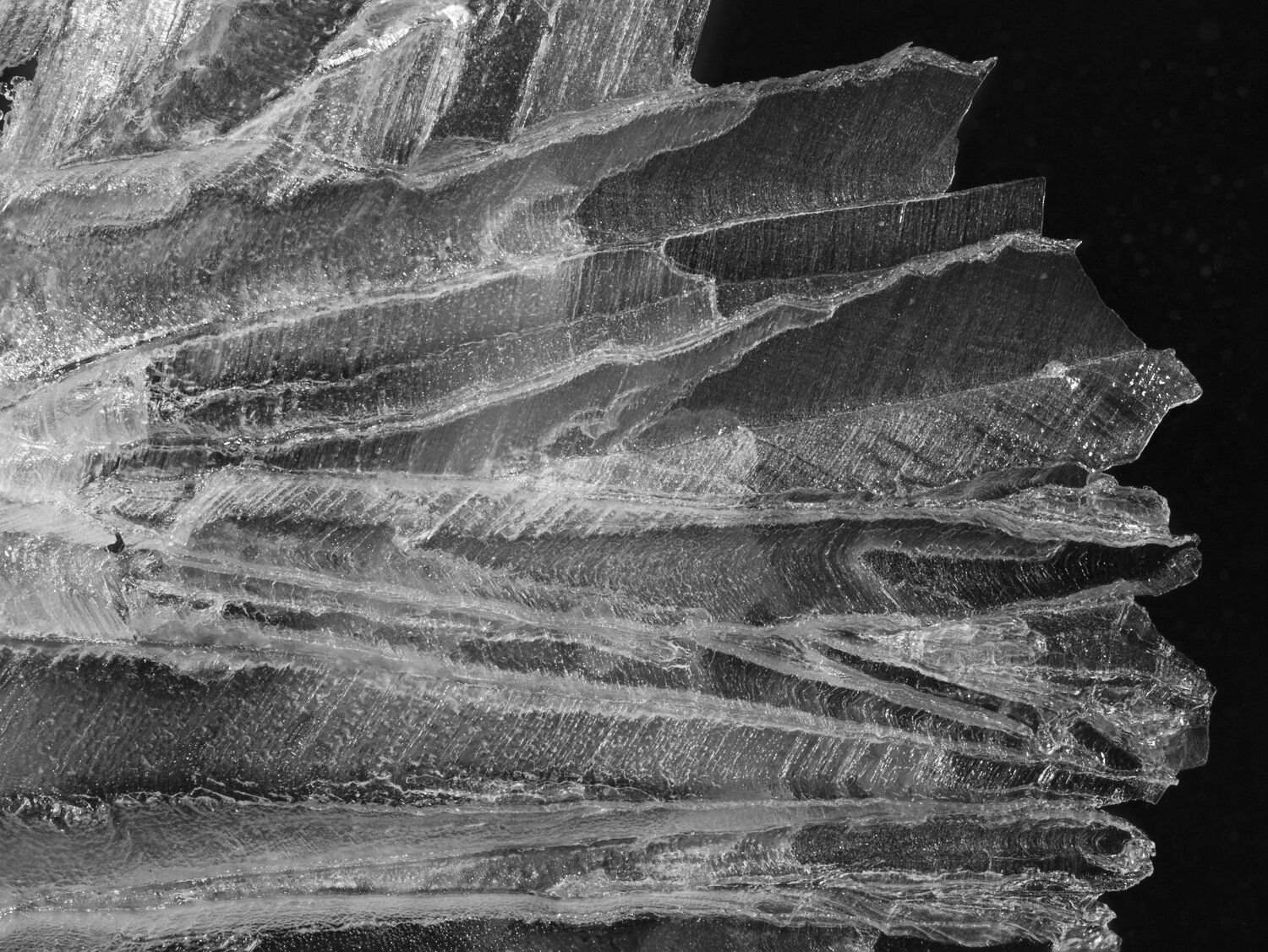


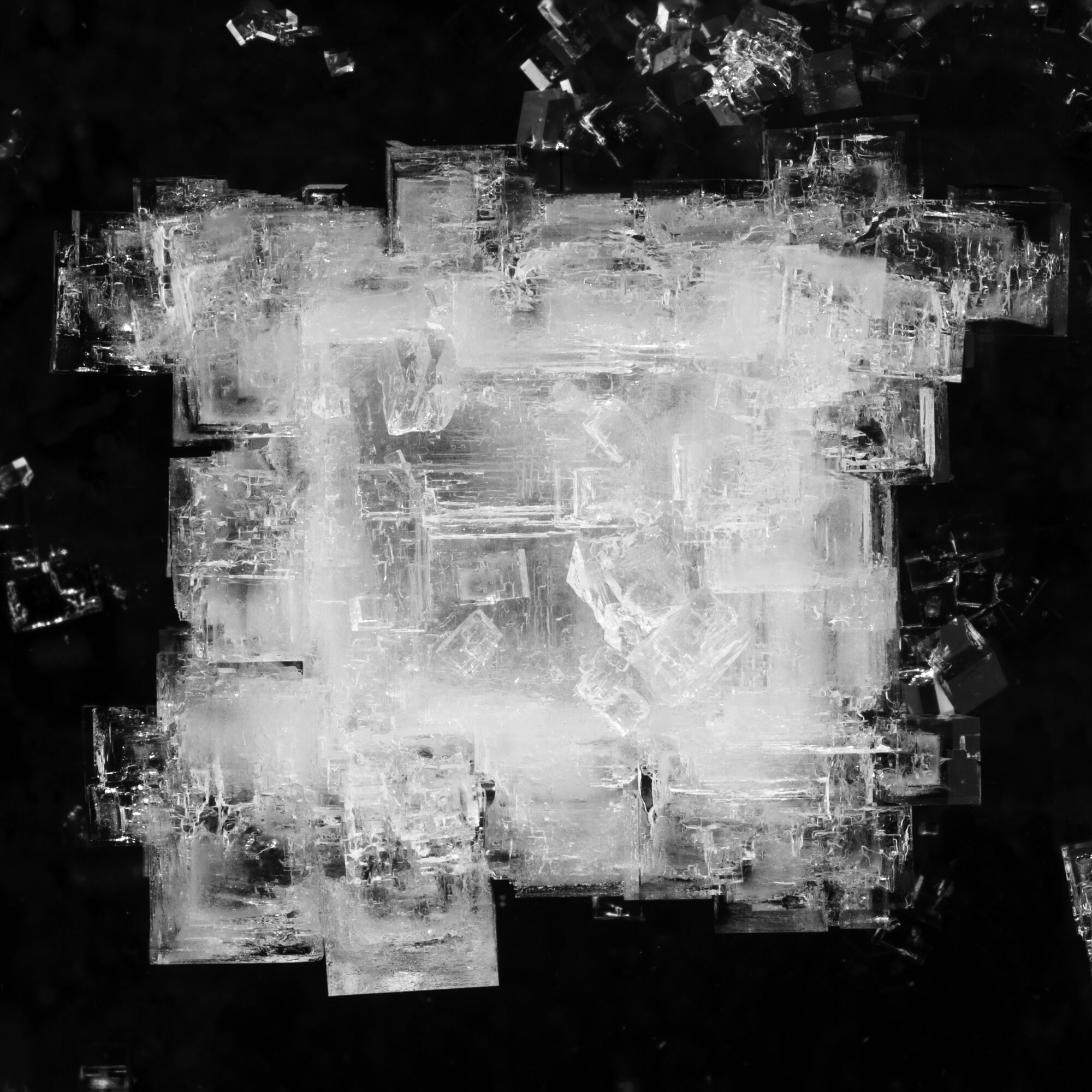
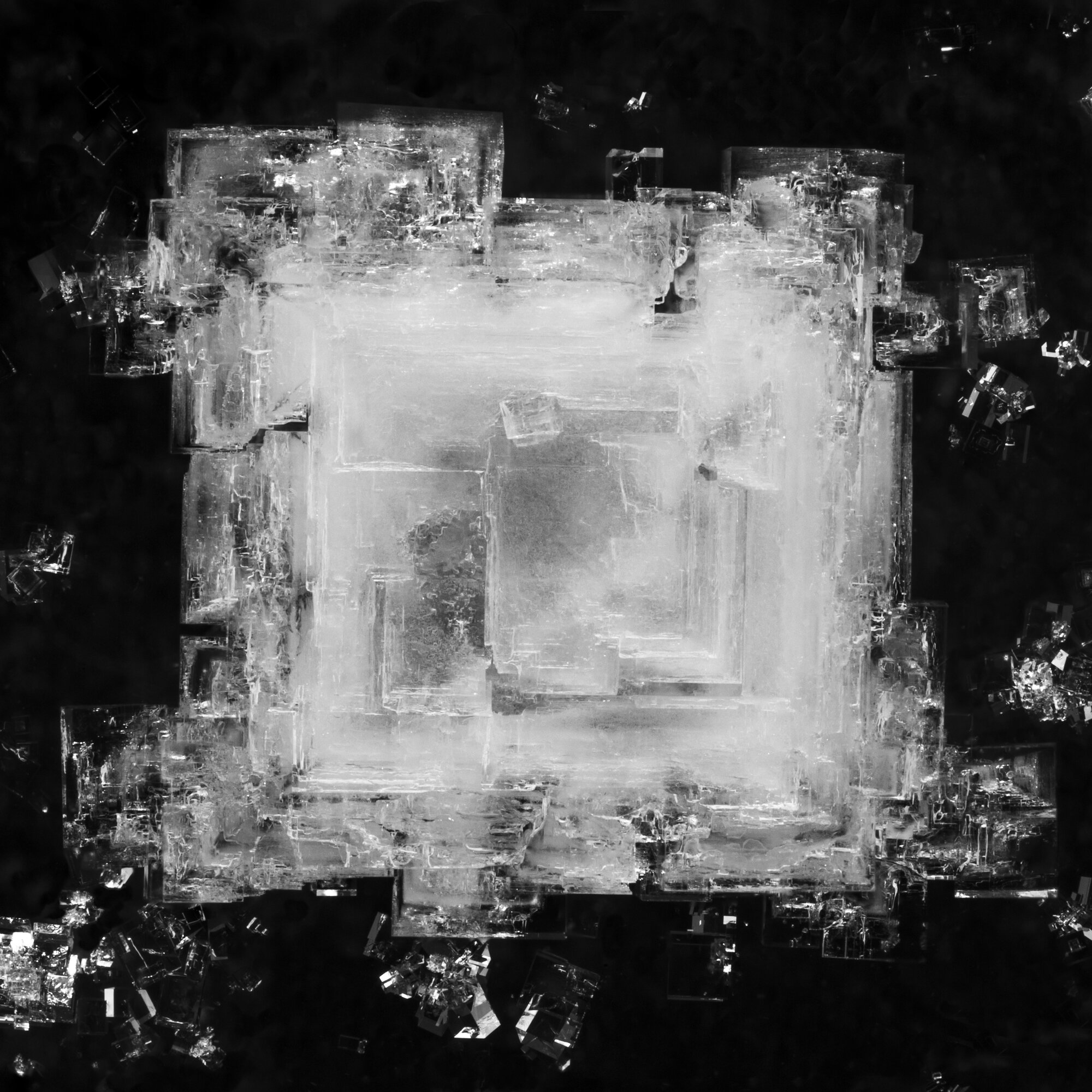
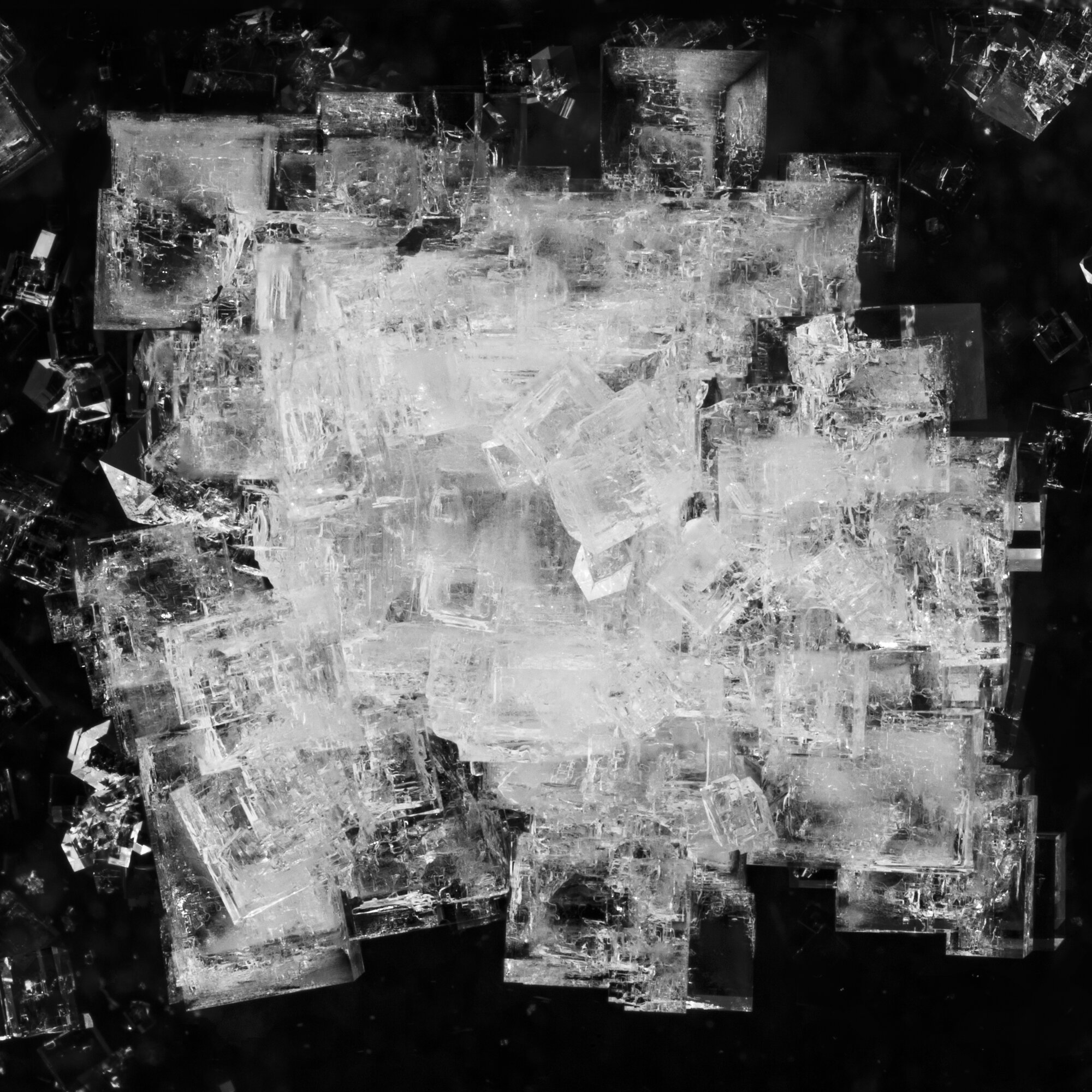
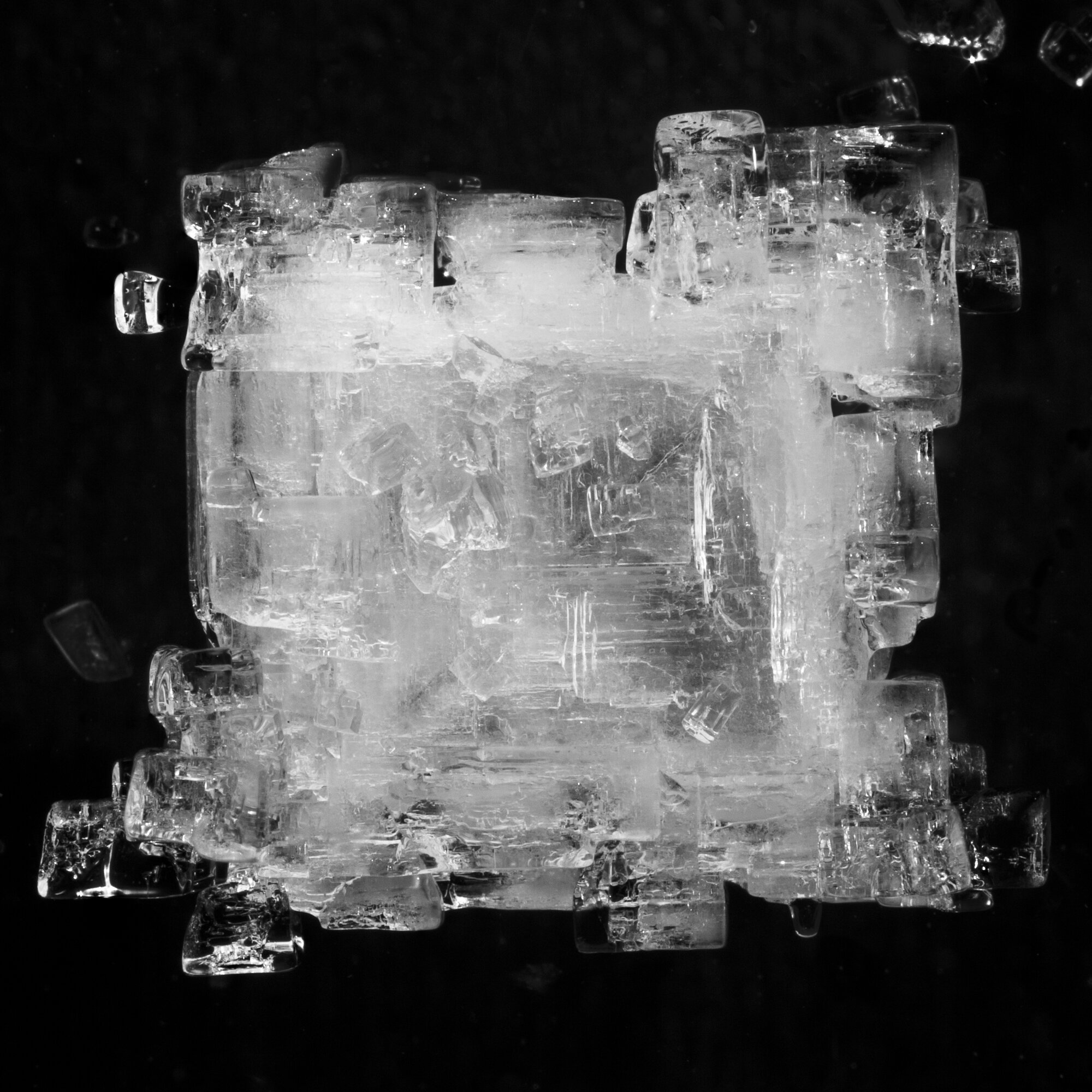
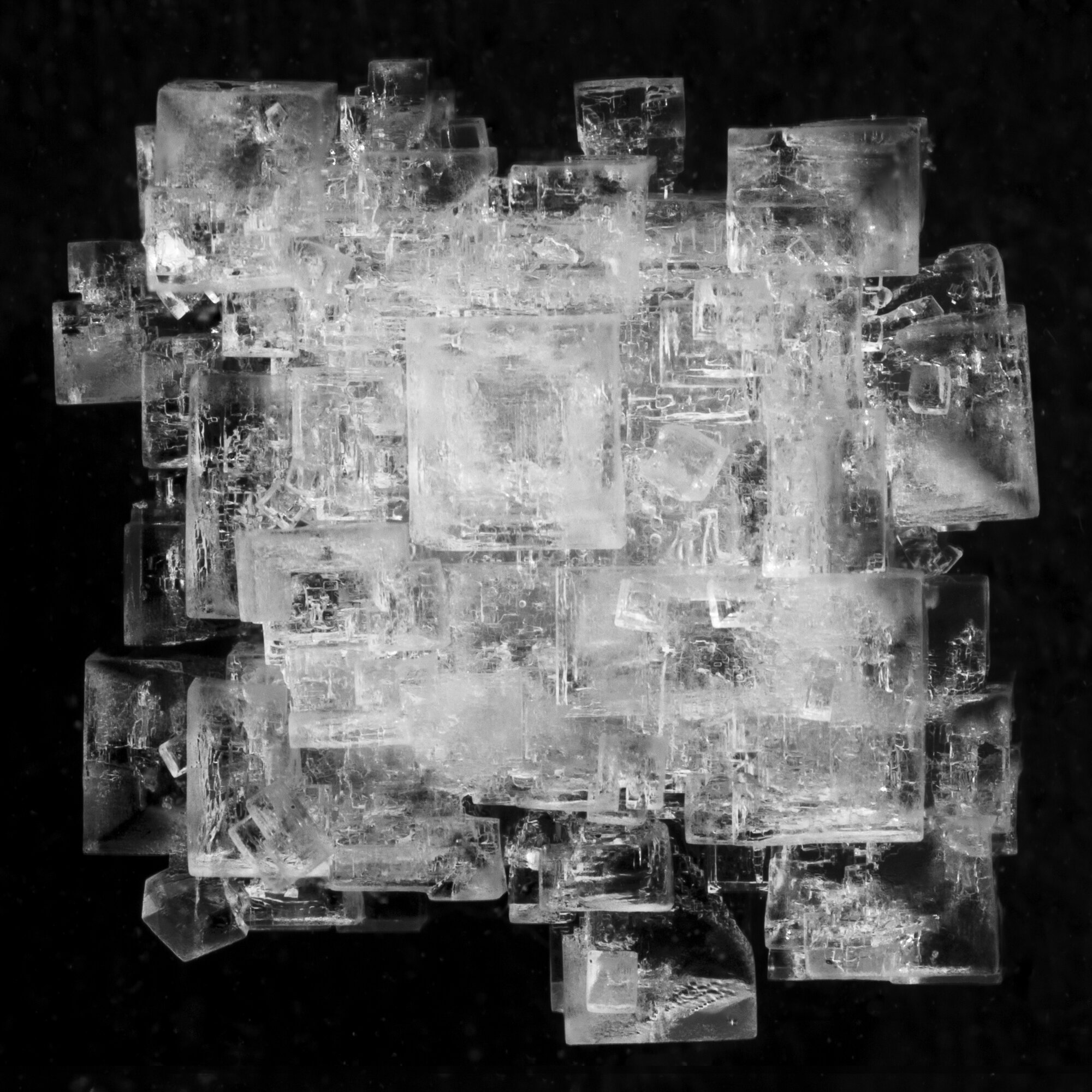
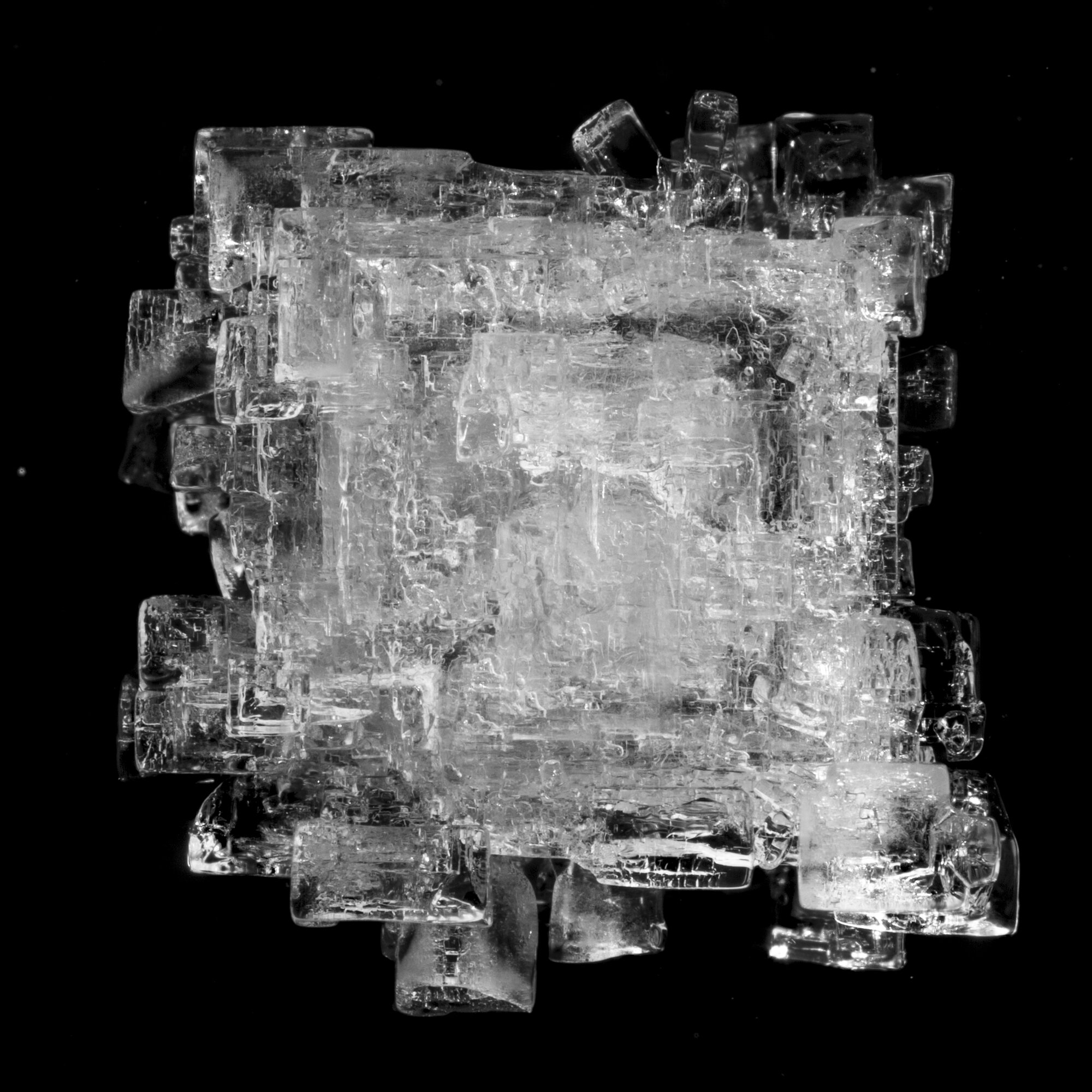




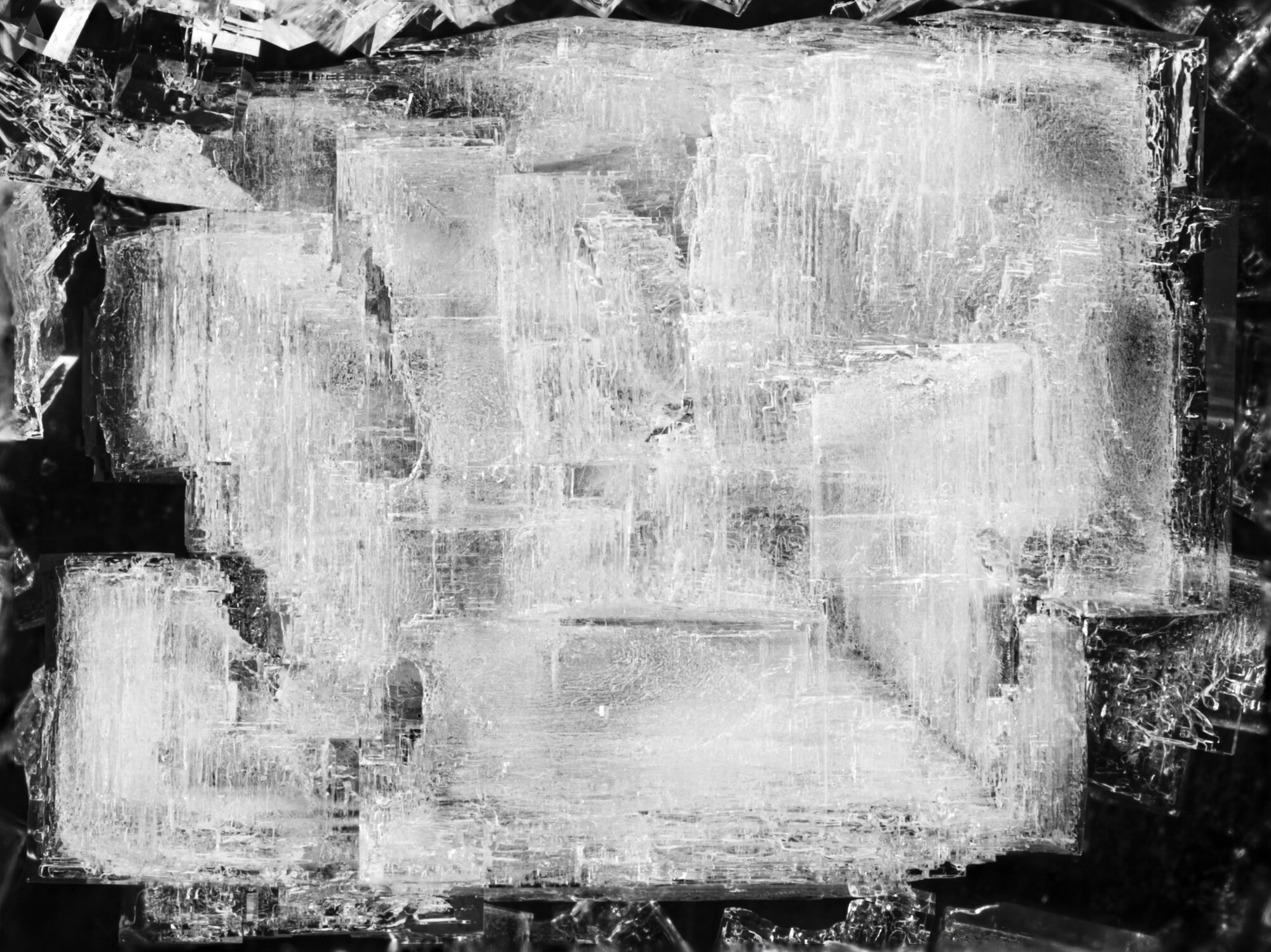
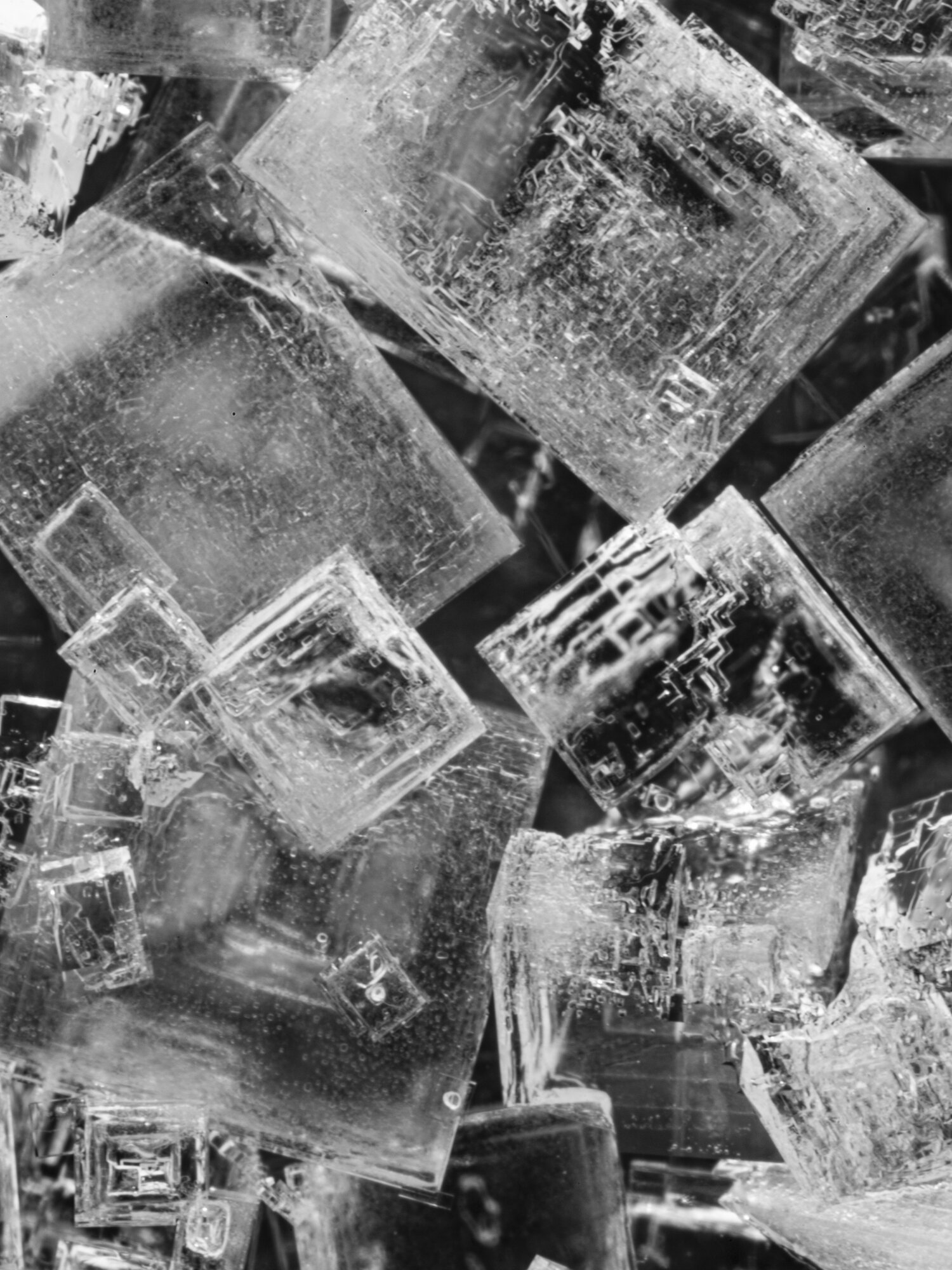

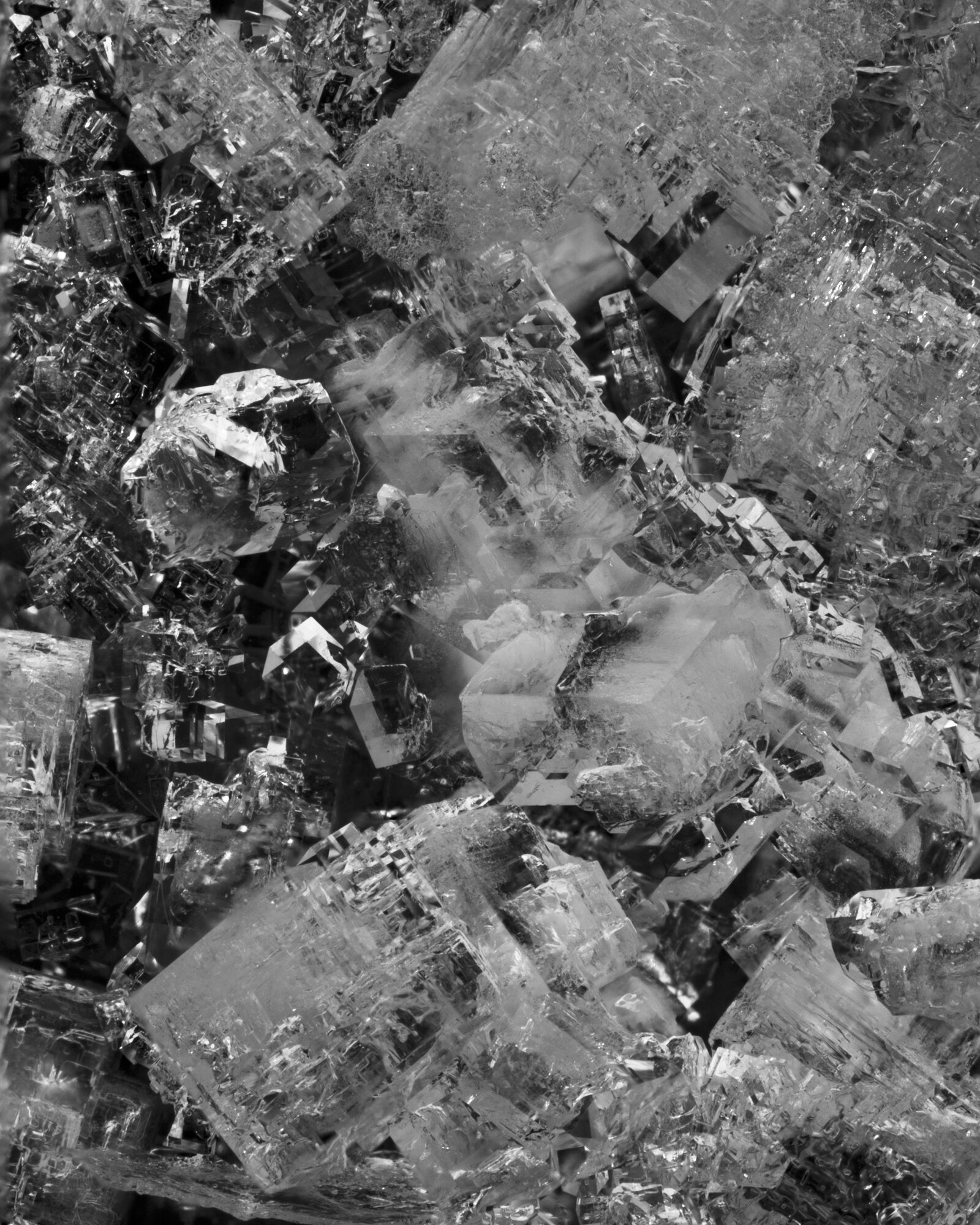
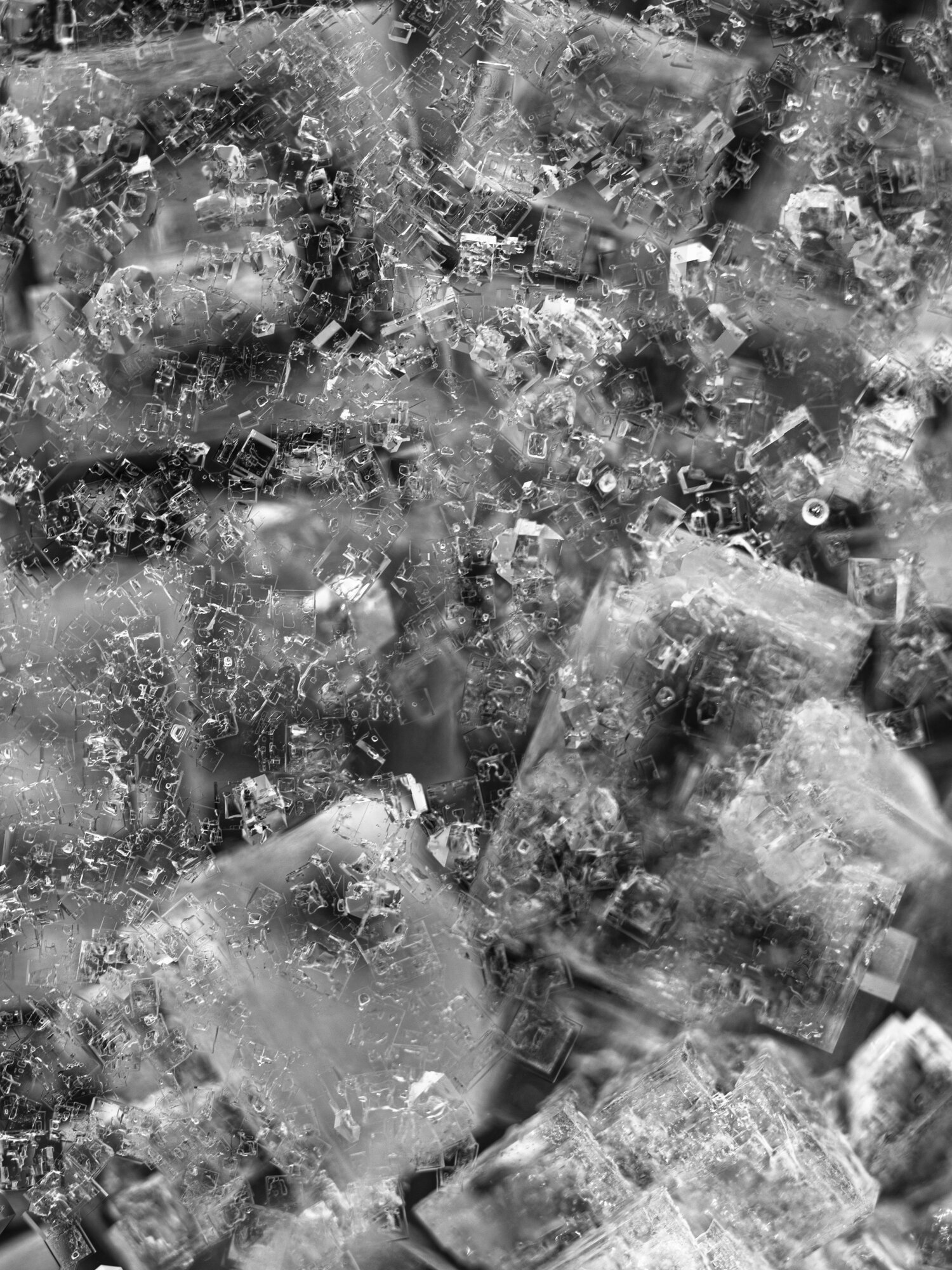
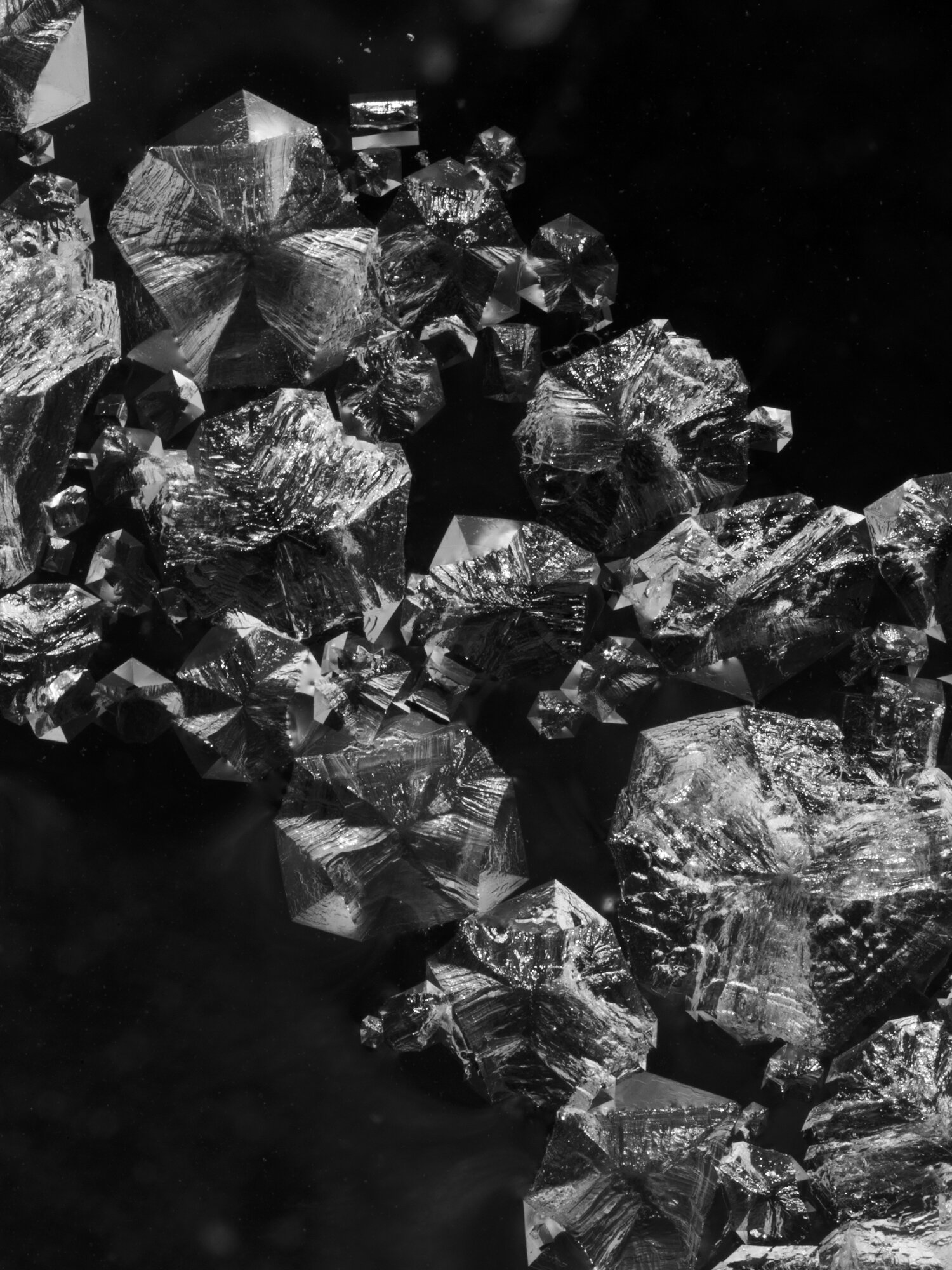
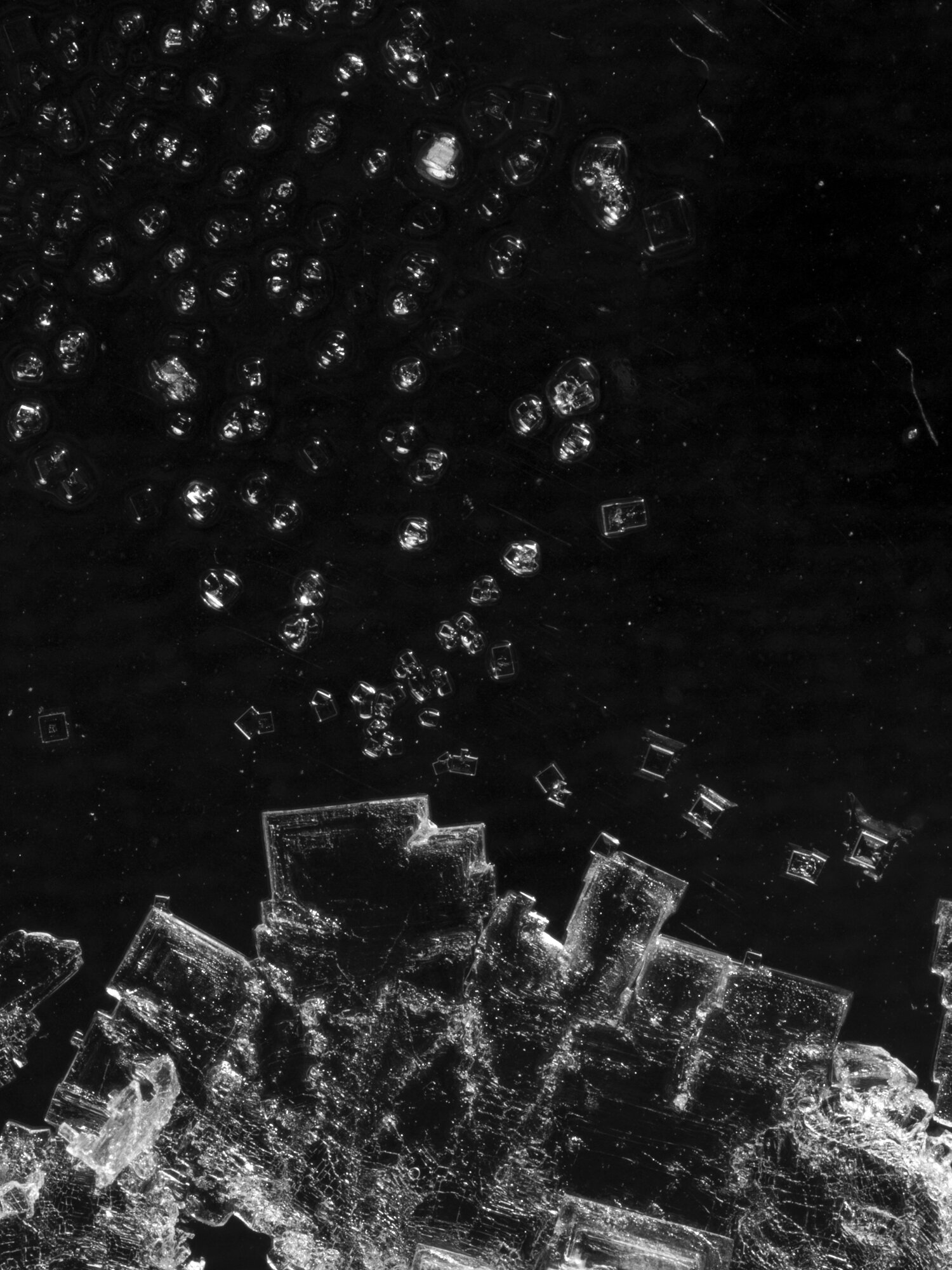
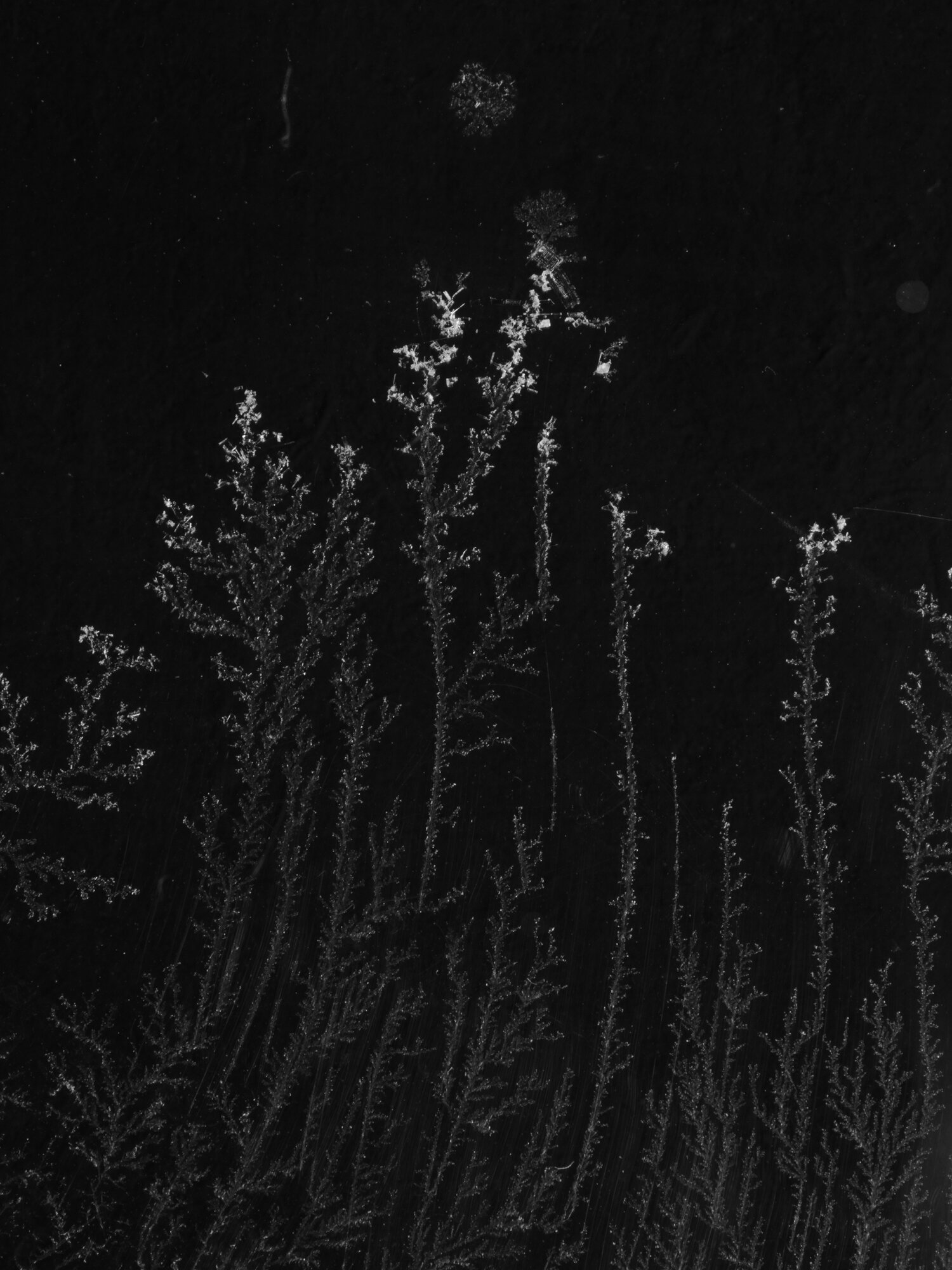
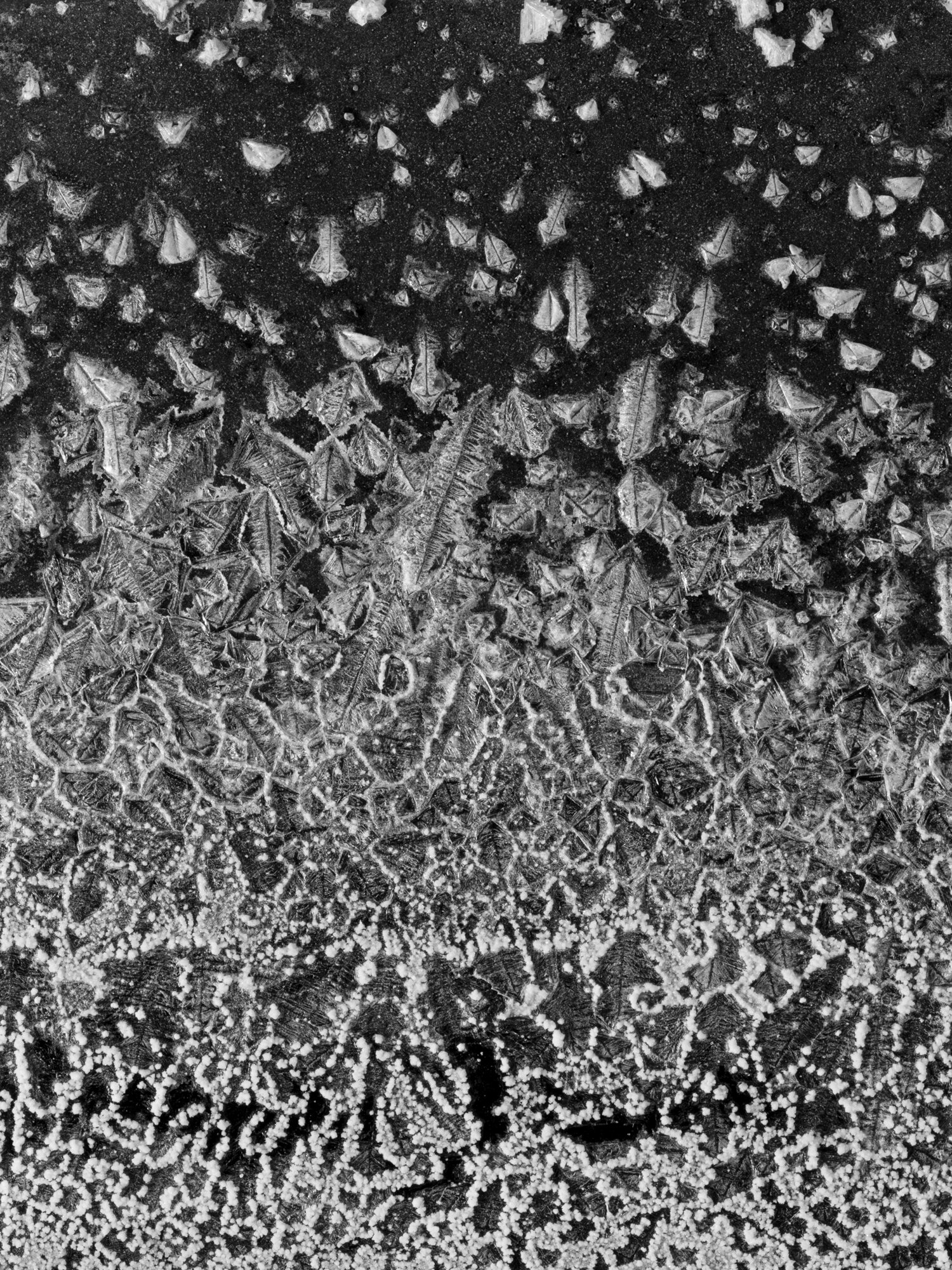
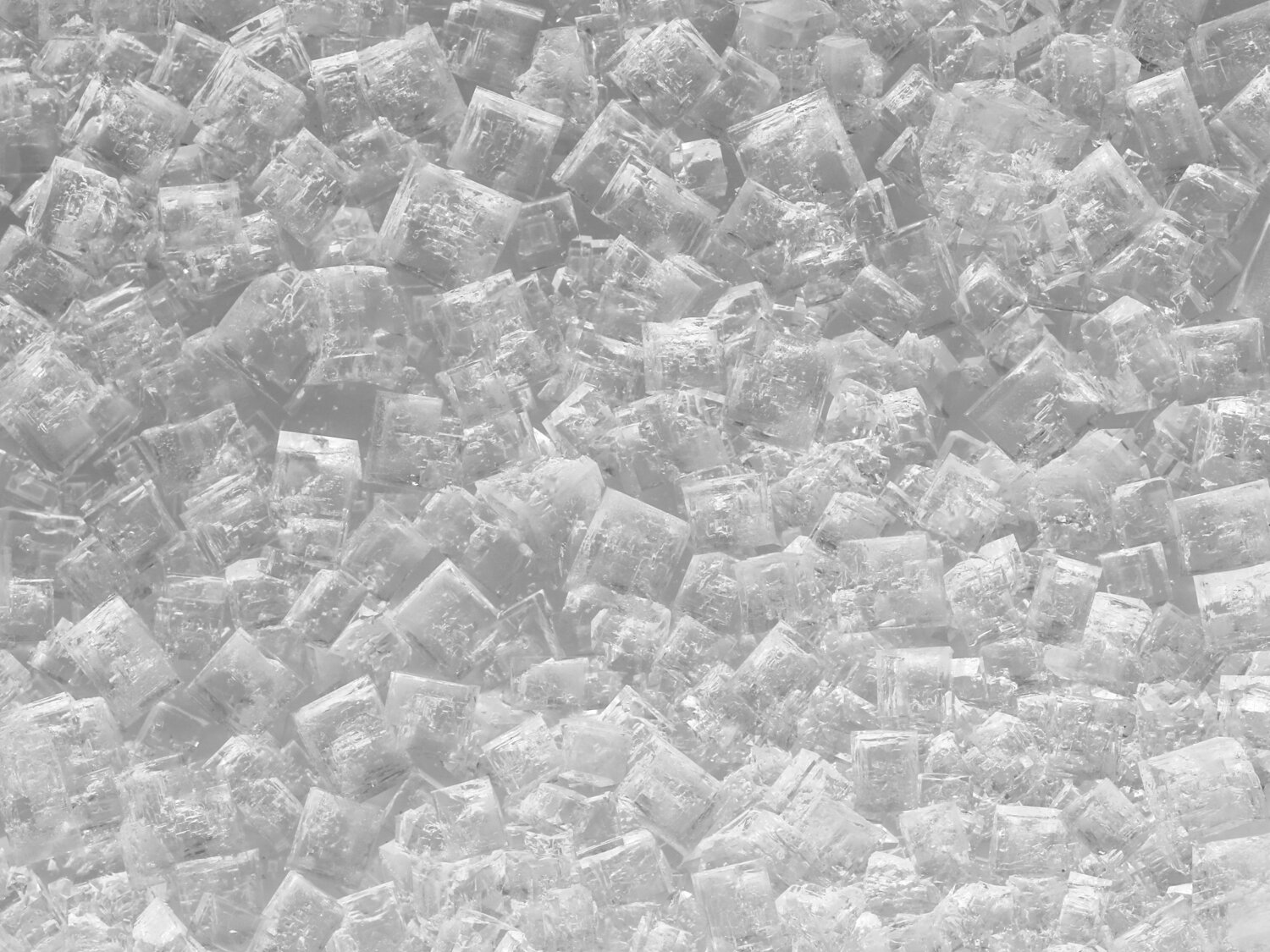
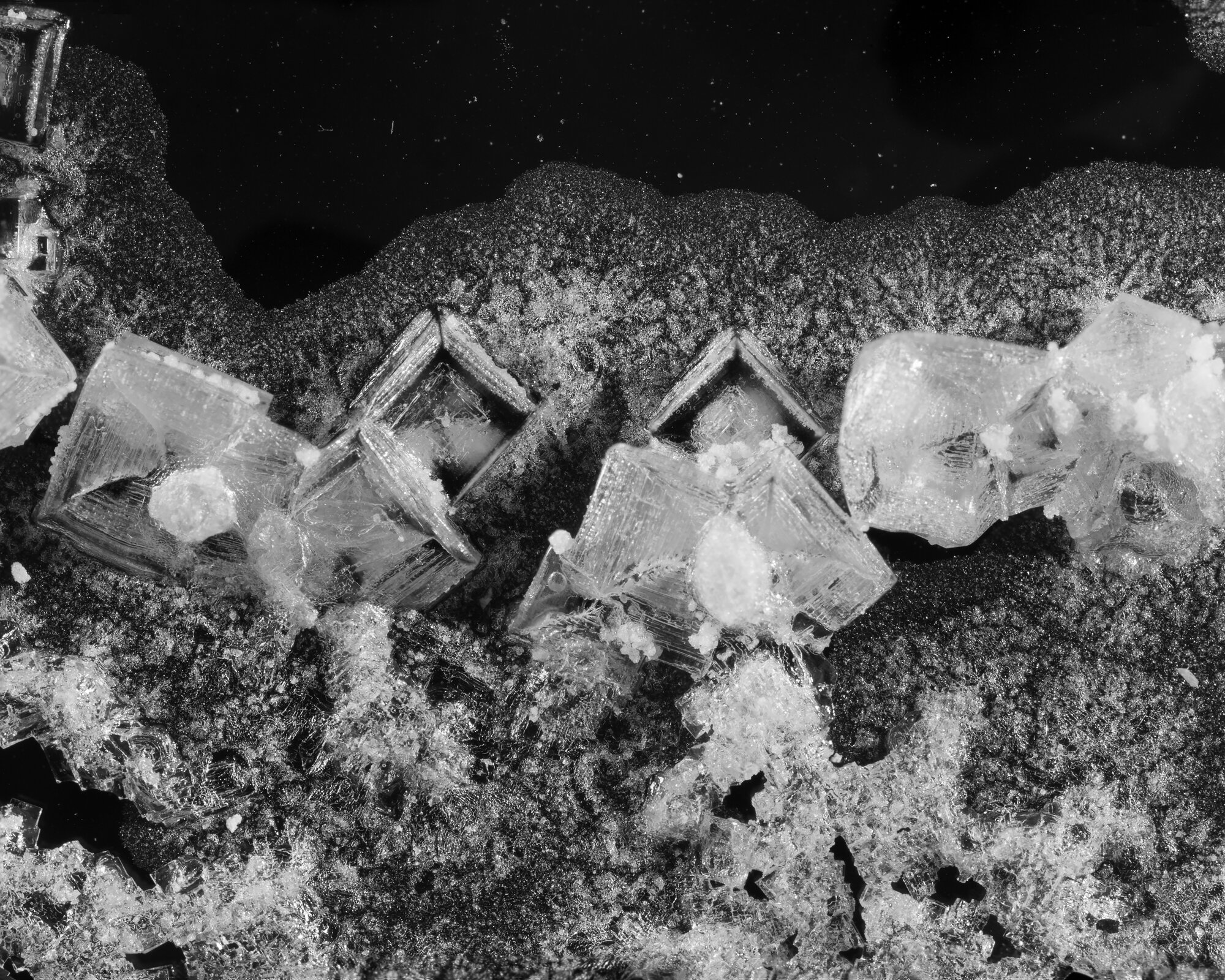
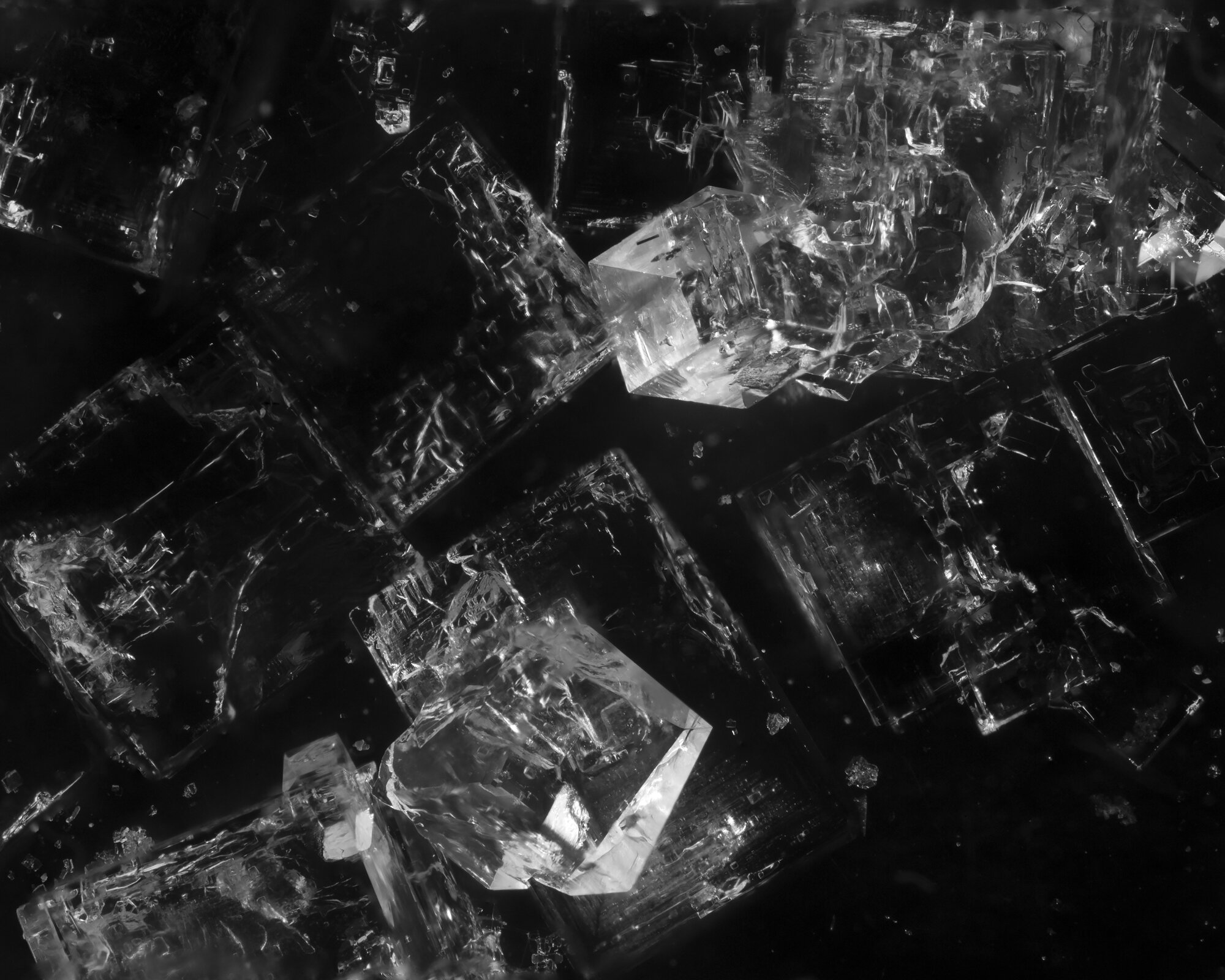
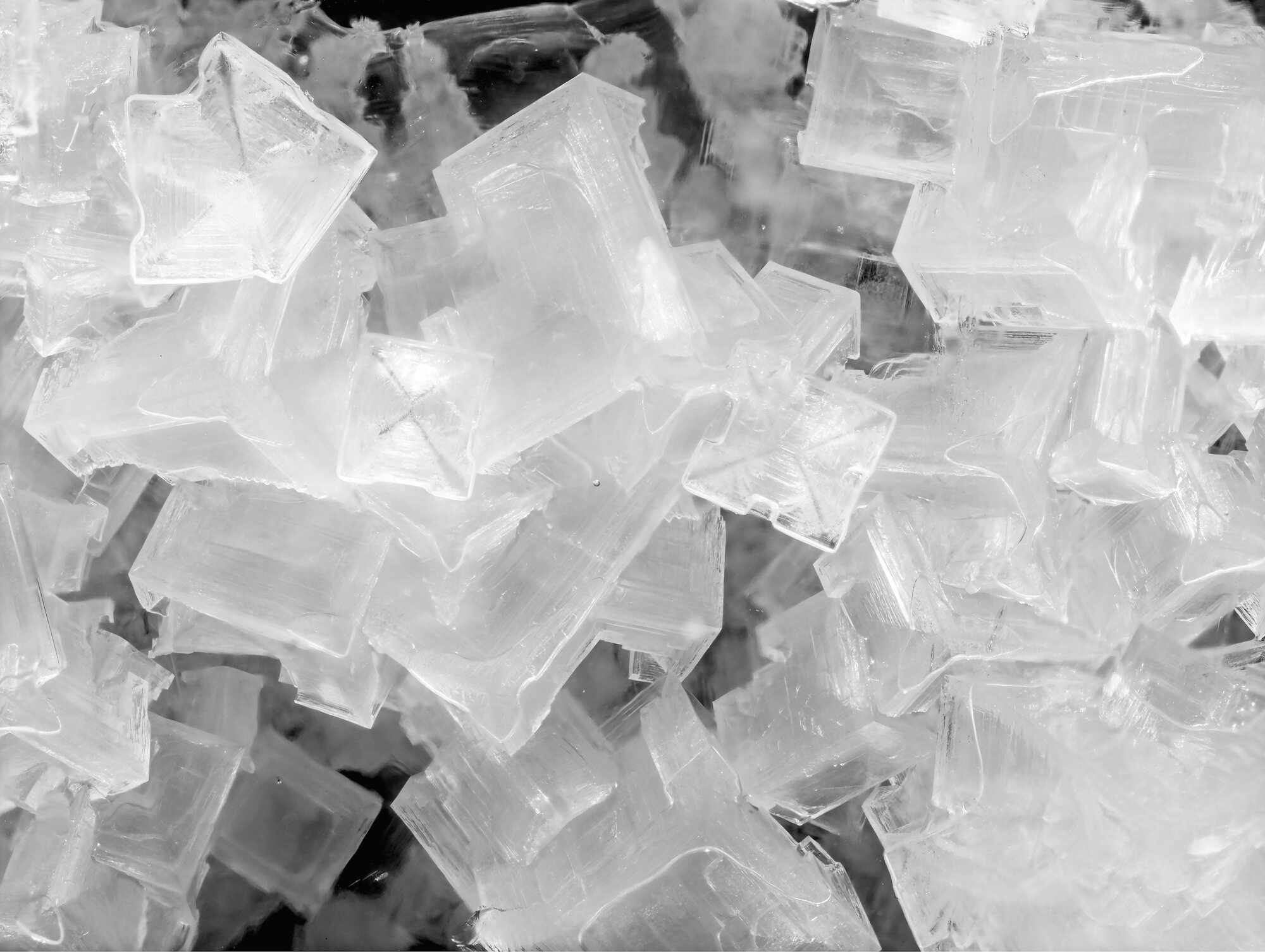
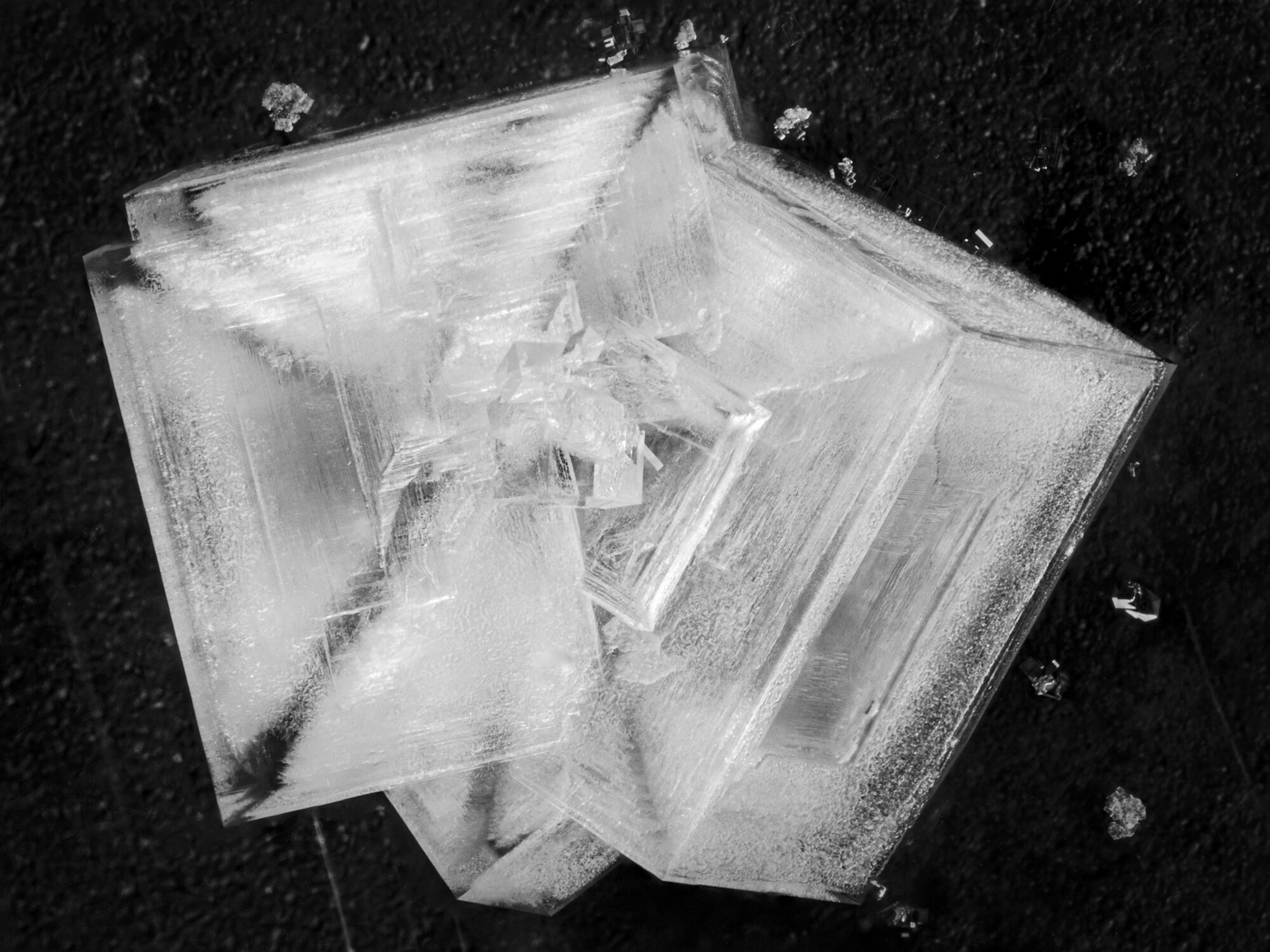
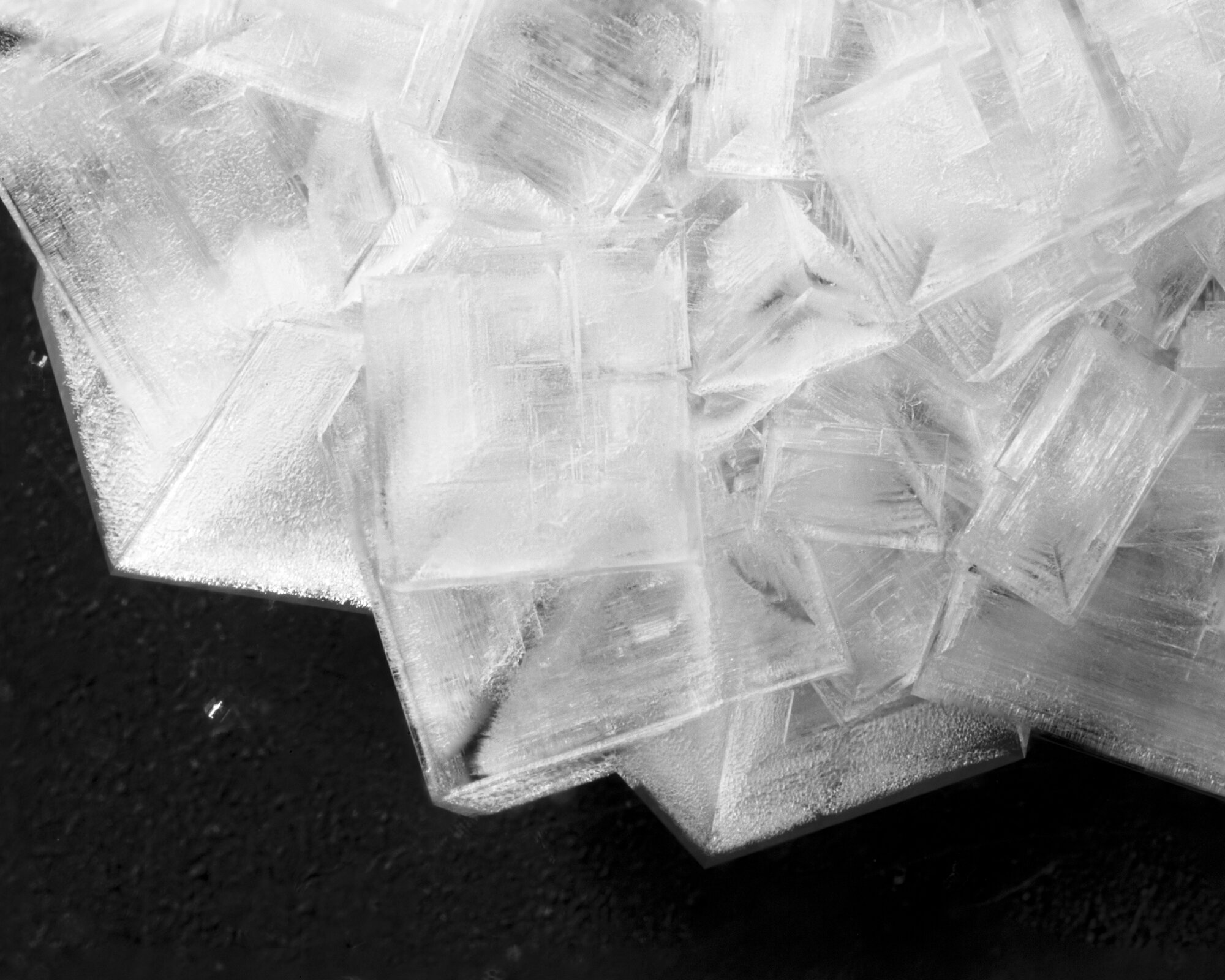
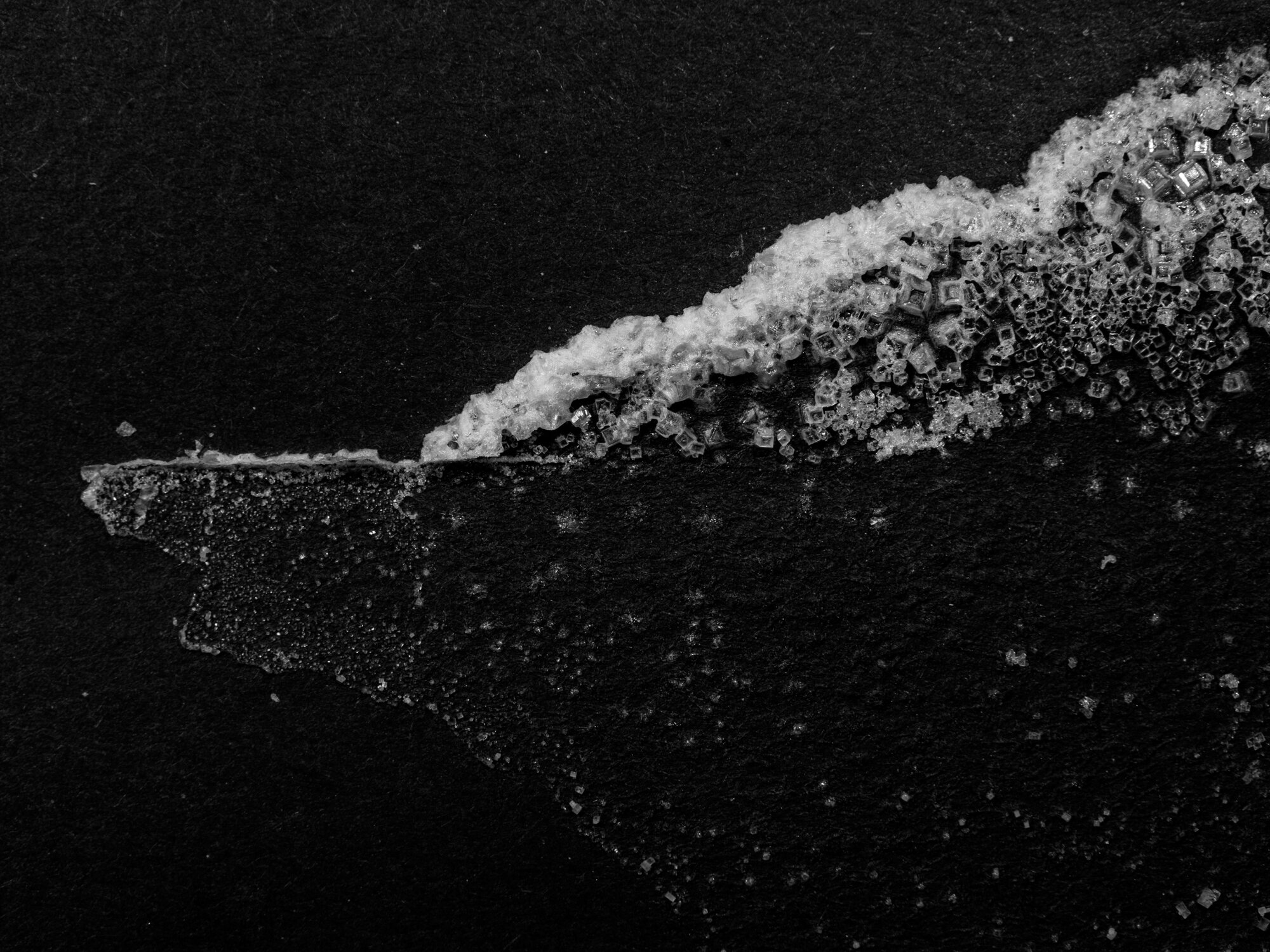
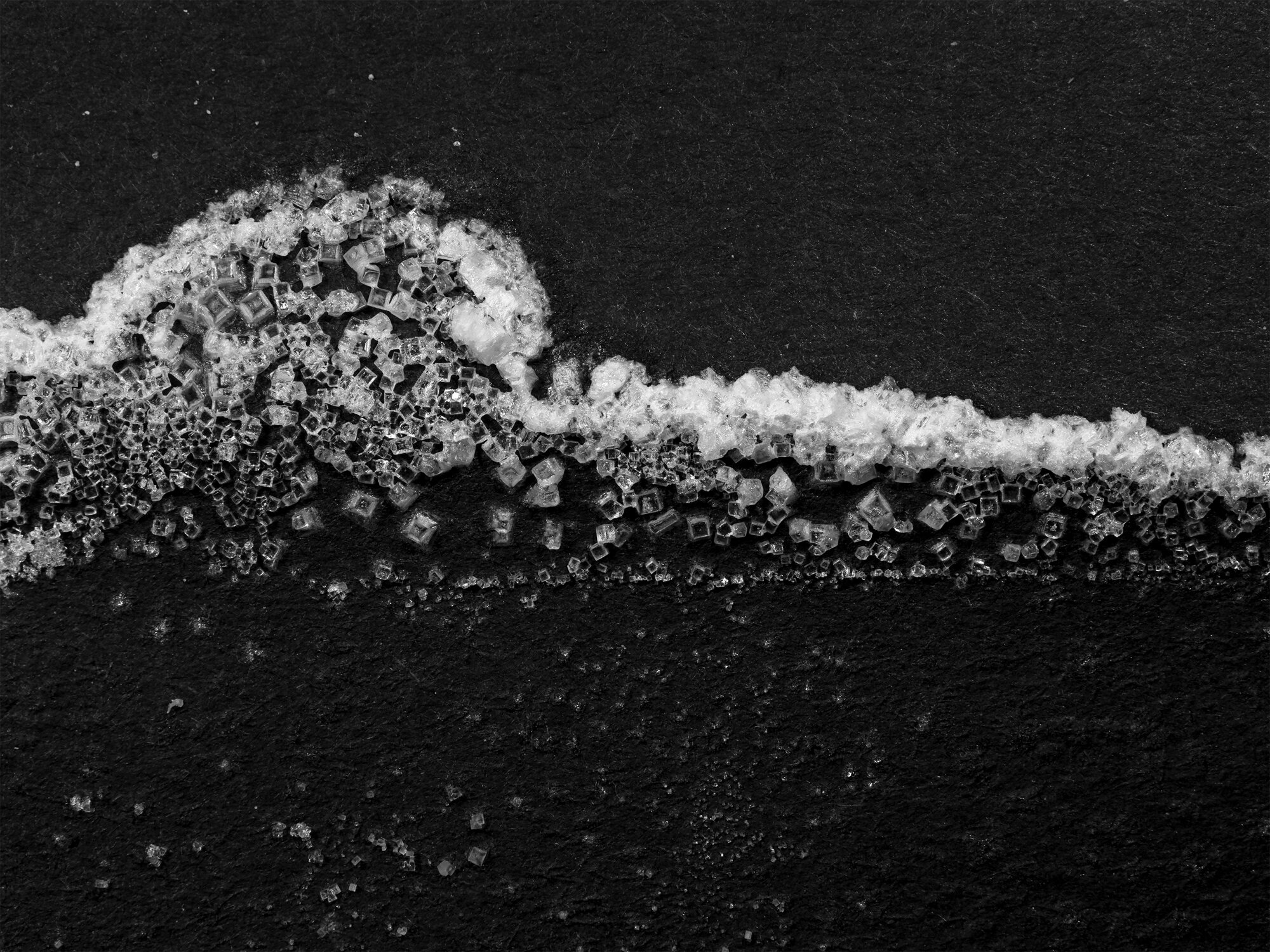
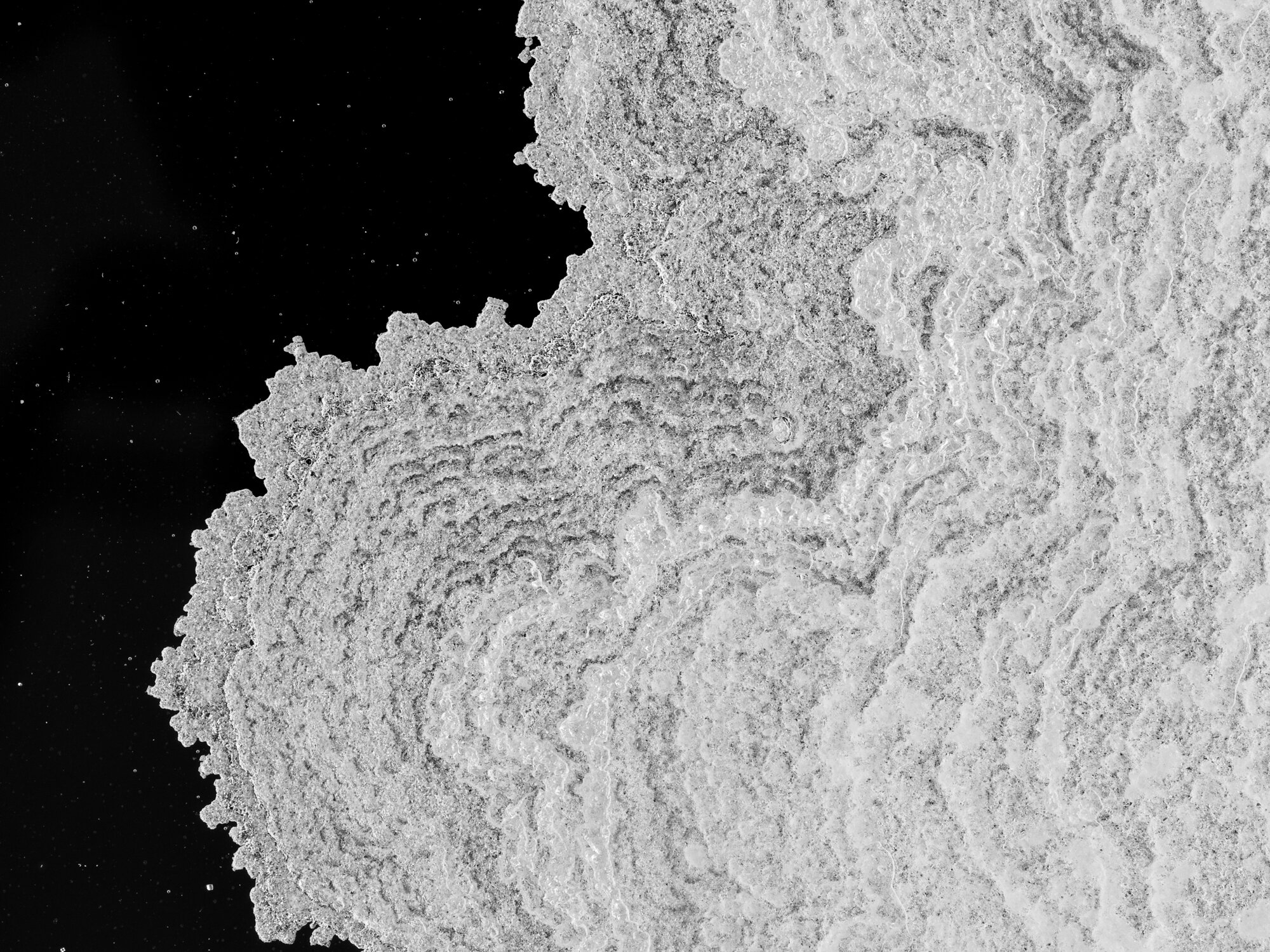



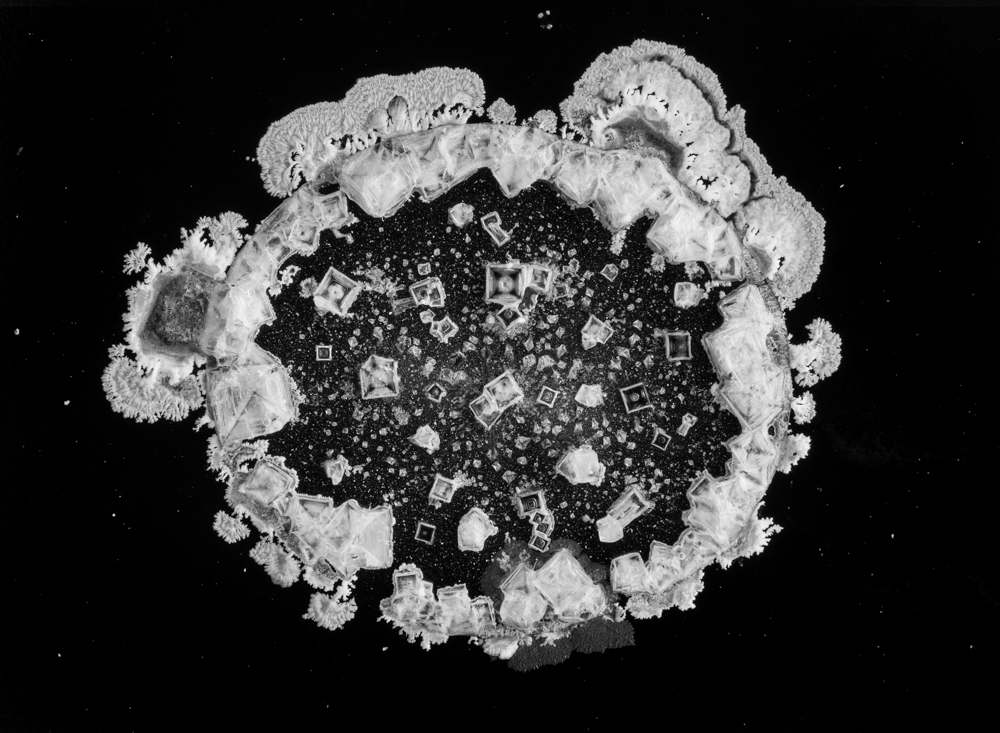


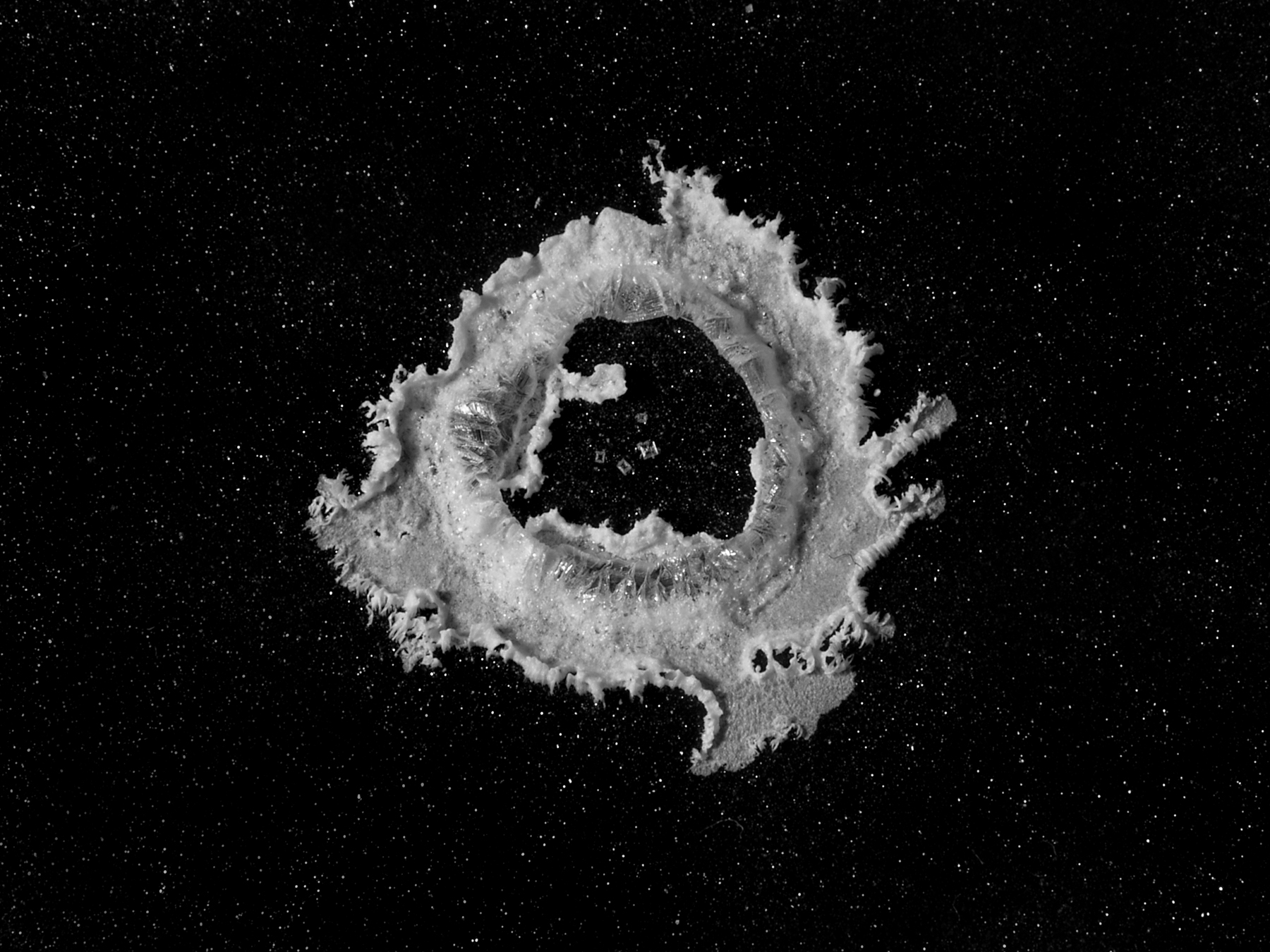


Salt is the commonest of common things. Essential as it is to human lives, salt finds its place in countless metaphors. We can taste it when we can’t see it, in our tears, on our skin; it makes us thirsty if we have too much. As a mineral in the world, it has a sort of life of its own. Left to its own devices, salt fluctuates between visible and invisible, organizing itself into structures and patterns, and dissolving again. Under ideal circumstances, the mineral settles into clean-edged structures that maintain clarity and precise right angles as they grow. But circumstances are rarely ideal. Fluctuations in temperature or humidity, an occasional jostle, or pollution in the water will disrupt the crystal formation. Any state we witness is a moment from a process of becoming, and our own mutable nature is there, in crystals that never quite reach an ideal form.
All photographs are available as archival inkjet prints; please email for details. Edition is open unless otherwise specified.
Above: Salt 3038, 2021
Salt is the commonest of common things. Essential as it is to human lives, salt finds its place in countless metaphors. We can taste it when we can’t see it, in our tears, on our skin; it makes us thirsty if we have too much. As a mineral in the world, it has a sort of life of its own. Left to its own devices, salt fluctuates between visible and invisible, organizing itself into structures and patterns, and dissolving again. Under ideal circumstances, the mineral settles into clean-edged structures that maintain clarity and precise right angles as they grow. But circumstances are rarely ideal. Fluctuations in temperature or humidity, an occasional jostle, or pollution in the water will disrupt the crystal formation. Any state we witness is a moment from a process of becoming, and our own mutable nature is there, in crystals that never quite reach an ideal form.
All photographs are available as archival inkjet prints; please email for details. Edition is open unless otherwise specified.
Above: Salt 3038, 2021